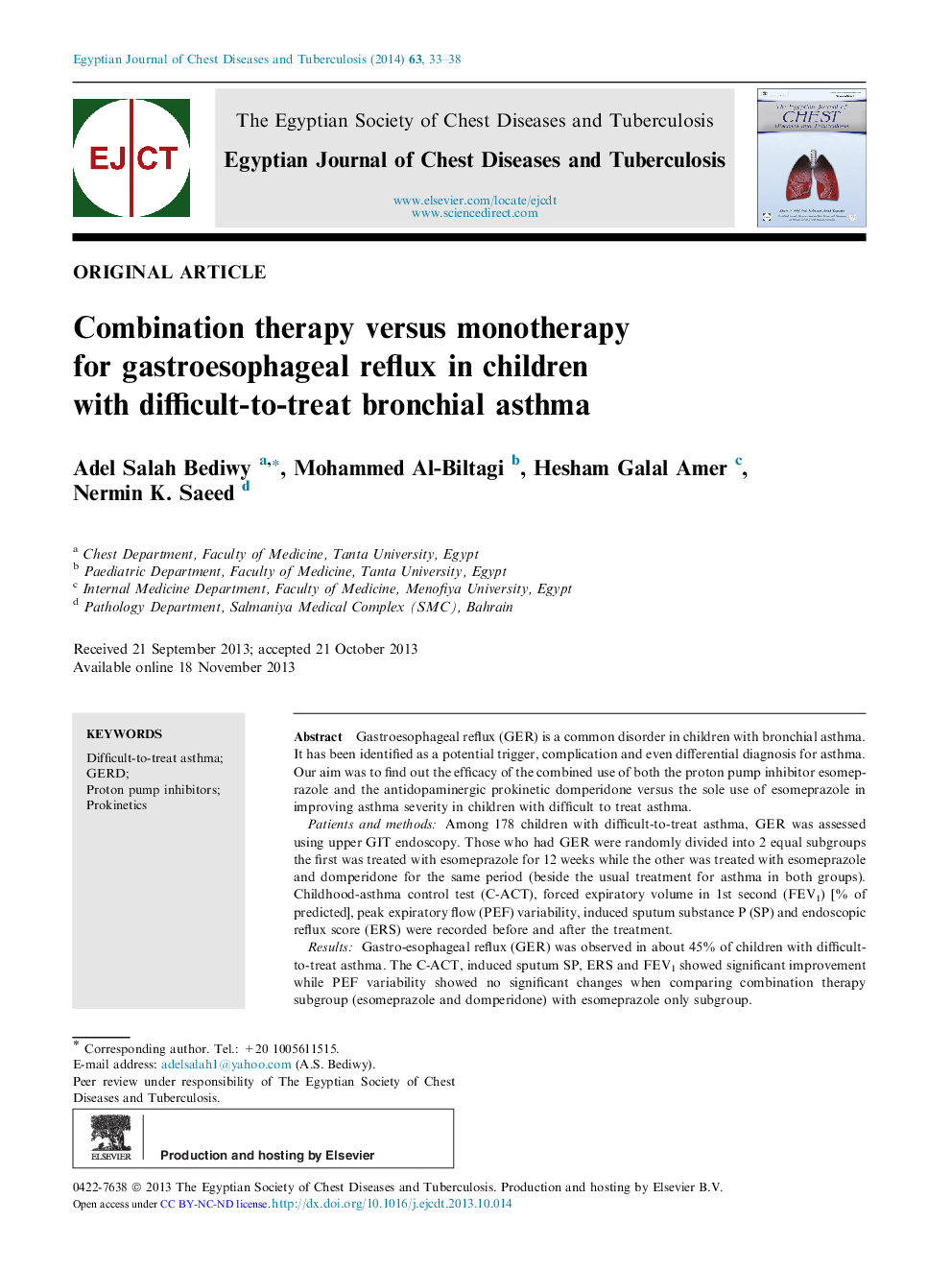| Article ID | Journal | Published Year | Pages | File Type |
|---|---|---|---|---|
| 3400132 | Egyptian Journal of Chest Diseases and Tuberculosis | 2014 | 6 Pages |
Gastroesophageal reflux (GER) is a common disorder in children with bronchial asthma. It has been identified as a potential trigger, complication and even differential diagnosis for asthma. Our aim was to find out the efficacy of the combined use of both the proton pump inhibitor esomeprazole and the antidopaminergic prokinetic domperidone versus the sole use of esomeprazole in improving asthma severity in children with difficult to treat asthma.Patients and methodsAmong 178 children with difficult-to-treat asthma, GER was assessed using upper GIT endoscopy. Those who had GER were randomly divided into 2 equal subgroups the first was treated with esomeprazole for 12 weeks while the other was treated with esomeprazole and domperidone for the same period (beside the usual treatment for asthma in both groups). Childhood-asthma control test (C-ACT), forced expiratory volume in 1st second (FEV1) [% of predicted], peak expiratory flow (PEF) variability, induced sputum substance P (SP) and endoscopic reflux score (ERS) were recorded before and after the treatment.ResultsGastro-esophageal reflux (GER) was observed in about 45% of children with difficult-to-treat asthma. The C-ACT, induced sputum SP, ERS and FEV1 showed significant improvement while PEF variability showed no significant changes when comparing combination therapy subgroup (esomeprazole and domperidone) with esomeprazole only subgroup.ConclusionsCombination of domperidone and esomeprazole was more effective in improving the endoscopic reflux score, childhood-asthma control test (C-ACT) and FEV1 (% of predicted) and significantly reduced the sputum SP than the use of esomeprazole only in children with difficult-to-treat asthma.
